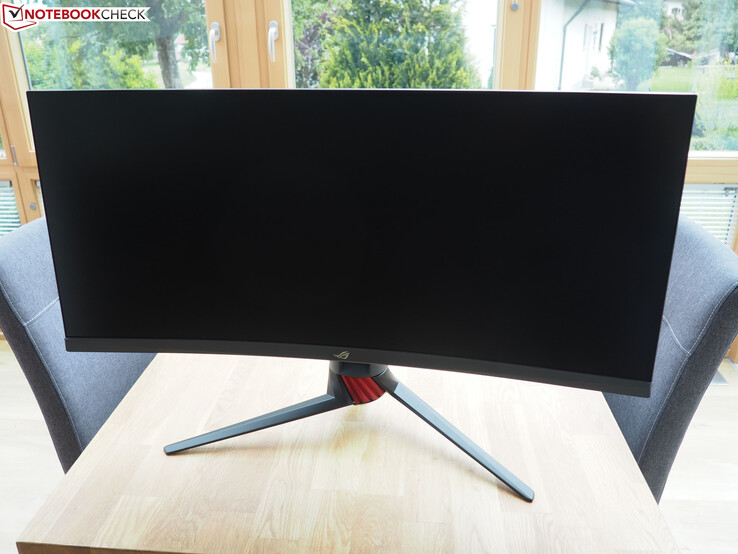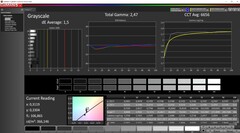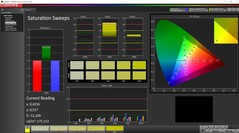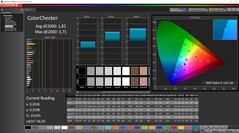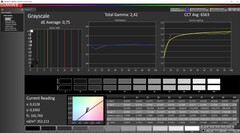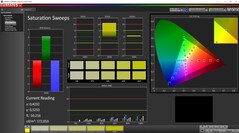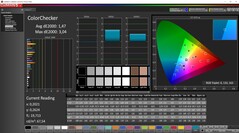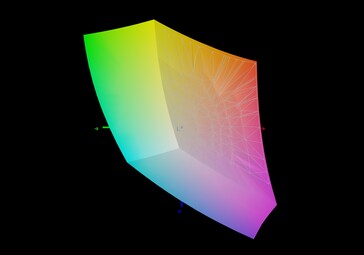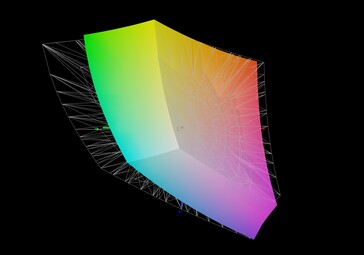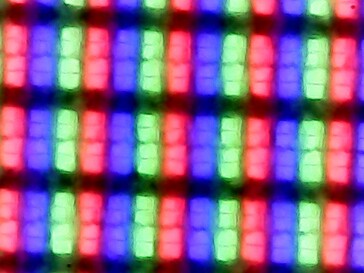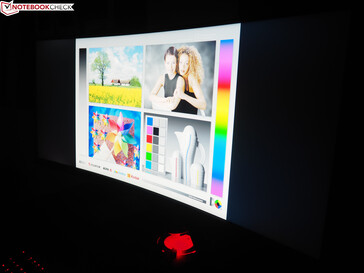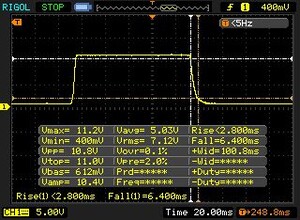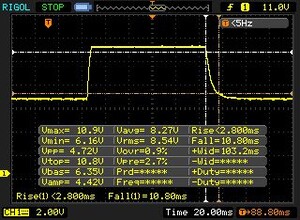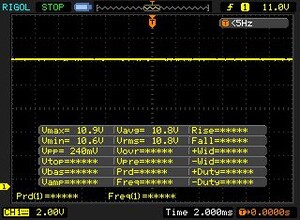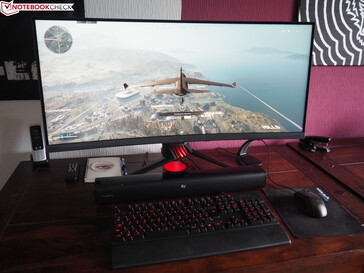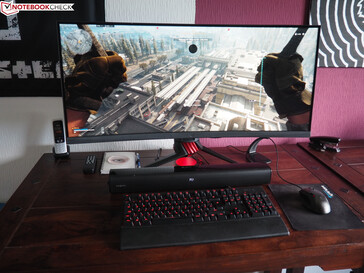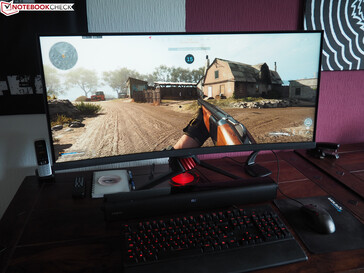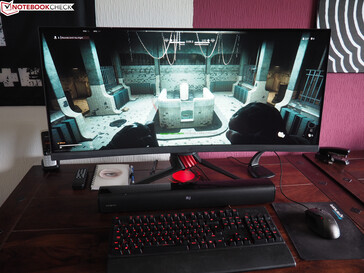Asus ROG Strix XG35VQ: 21:9 Curved Monitor in Review
Specifications
Gaming enthusiasts tend to be at the forefront of technological development and eager to try new things in order to determine the pros and cons of new technologies. One of the most important display trends of late are 21:9 displays. The spectrum starts with affordable displays running at 2560x1080 at 60 Hz and ends at almost sinfully expensive contenders running at 5120x2160 at higher refresh rates. Today’s review unit is a mid-range device right in-between those two extremes, running at a native resolution of 3440x1440 pixels and a refresh rate of 100 Hz. As its name suggests the slightly dated Asus ROG Strix XG35VQ is a 35-inch monitor with a curved display surface specifically targeted at gamers.
| ROG Strix XG35VQ | |
|---|---|
| Screen size | 35 inches (88.9 cm) |
| Format | 21:9 Curved |
| Curvature | 1800R |
| Resolution | 3440x1440 (UWQHD) |
| Panel | VA |
| Frequency | 100 Hz |
| Features | FreeSync |
| Connectivity | 1x DisplayPort 1.2, 1x HDMI 2.0, 1x HDMI 1.4, 3x USB 3.0, 1x Line-Out |
| Weight (incl. stand) | 26.9 lbs (12.2 kg) |
Case
If you are a fan of striking and distinctive designs, then the XG35VQ is most likely going to grow on you very quickly. The very robust stand made predominantly of metal features an asymmetric design with red lamella elements and a cleverly positioned cable management tray. In addition, a round surface right underneath the stand is lit up in red. The display itself features narrow bezels and is much more discreet and unobtrusive than its stand, at least at the front. The backside, in return, features the typical ROG Strix look emphasized by an RGB ring. Build quality is solid, but at 12.2 kg (26.9 lbs) its weight is pretty hefty for a display this size.
Connectivity
Connectivity should be more than adequate for most users. In order to run the display at its native resolution and refresh rate of 3440x1440 pixels and 100 Hz, respectively, you need to connect either via the single DisplayPort 1.2 or one of the two HDMI ports (HDMI 2.0). The other HDMI port only supports HDMI 1.4. Additional ports include a 3.5-mm headphone jack and three USB 3.0 ports (2x Type-A, 1x Type-B). The power supply is not built into the display itself but included as an external 90 W brick, which is somewhat uncommon for a display.
Ergonomics
Overall ergonomics were decent despite the lack of pivot support. The XG35VQ can be tilted (+20° to -5°), rotated (+50° to – 50°), and height adjusted (up to 10 cm / 4 inches). Thus, you can perfectly adjust the display to your individual seating arrangement and application.
Operation
Handling is a mixed bag, to say the least. Just like with the PB287Q 4K display reviewed back in 2015 we did not grow particularly fond of the hidden buttons that while great from a visual point of view make handling the display an arduous task. At least the menus were well arranged and clear. The joystick accompanied by four buttons is pretty useful overall as well. In addition to various display modes (racing, cinema, RTS/RPG, etc.) the on-screen menu also contains various gaming-specific settings, such as a timer or an FPS counter.
Image Quality
Image quality was pretty good for a gaming monitor. The VA panel features narrower viewing angles than typical IPS panels but still manages to run circles around a TN panel. The following tests were conducted with the display’s GameVisual mode set to “User” at maximum brightness.
| |||||||||||||||||||||||||
Brightness Distribution: 88 %
Contrast: 2219:1 (Black: 0.16 cd/m²)
ΔE ColorChecker Calman: 1.82 | ∀{0.5-29.43 Ø4.77}
calibrated: 1.47
ΔE Greyscale Calman: 1.5 | ∀{0.09-98 Ø5}
97% sRGB (Argyll 1.6.3 3D)
76% AdobeRGB 1998 (Argyll 1.6.3 3D)
Gamma: 2.47
CCT: 6656 K
With an average maximum brightness of 327 nits the 35-inch screen performed decently well and should be bright enough for most indoor applications and situations. Thanks to its decent black level of just 0.16 nits, the resulting contrast ratio was more than 2,200:1. Color accuracy was fairly high according to CalMAN, and at 97% sRGB and 76% AdobeRGB color-space coverage was more than high enough for gaming purposes as well as non-professional photo and video-editing.
Gamers will benefit from the display’s low response times the most. According to our tests, black-to-white takes around 9 ms while gray-to-gray takes a slightly longer 13 ms. Thanks to its matte finish there are virtually no reflections, although we are aware of displays that are even more matte than the XG35VQ.
Display Response Times
| ↔ Response Time Black to White | ||
|---|---|---|
| 9.2 ms ... rise ↗ and fall ↘ combined | ↗ 2.8 ms rise | |
| ↘ 6.4 ms fall | ||
| The screen shows fast response rates in our tests and should be suited for gaming. In comparison, all tested devices range from 0.1 (minimum) to 240 (maximum) ms. » 24 % of all devices are better. This means that the measured response time is better than the average of all tested devices (20.2 ms). | ||
| ↔ Response Time 50% Grey to 80% Grey | ||
| 13.6 ms ... rise ↗ and fall ↘ combined | ↗ 2.8 ms rise | |
| ↘ 10.8 ms fall | ||
| The screen shows good response rates in our tests, but may be too slow for competitive gamers. In comparison, all tested devices range from 0.165 (minimum) to 636 (maximum) ms. » 26 % of all devices are better. This means that the measured response time is better than the average of all tested devices (31.6 ms). | ||
Screen Flickering / PWM (Pulse-Width Modulation)
| Screen flickering / PWM not detected | |||
In comparison: 53 % of all tested devices do not use PWM to dim the display. If PWM was detected, an average of 8081 (minimum: 5 - maximum: 343500) Hz was measured. | |||
Real-World Impressions
Even though the 21:9 aspect ratio seemed odd and unfamiliar at first, we got used to it very quickly and actually started preferring it to the more traditional 16:9 display ratio after a short period of time. You can display two whole documents side-by-side, and more often than not you are able to run three applications or open windows simultaneously without requiring a second display.
When gaming, the 21:9 aspect ratio and its improved peripheral vision and wider field of view can be quite beneficial as well, especially in competitive first-person shooters such as Call of Duty Warzone (see photos). However, you need to consider the fact that many older and even some current games do not support ultra-wide displays yet, which might result in either shifted images or black bars left and right during in-game videos. Speaking of which: Feature films have been shot in 21:9 for a long time and thus benefit from these ultra-wide displays immensely.
Generally speaking, the display showed a smooth image with only minimal ghosting. Even though you can already get 200 Hz displays, a 100 Hz refresh rate is a very welcome improvement over the typical 60 Hz display of yore. Even simple things, like the smoothness of the Windows mouse cursor, benefit noticeably and feel much smoother and more pleasant. FreeSync is supported with a compatible graphics card.
As the table below indicates our 3440x1440 display’s power consumption was right in-between traditional 16:9 2560x1440 and 3840x2160 displays. In order to run demanding games, such as Red Dead Redemption 2, in UWQHD we would recommend at least a GeForce RTX 2070. Less demanding or highly optimized games, such as Doom Eternal, will even be able to fully utilize the display’s high refresh rate.
| GeForce RTX 2070 @Ultra settings | 2560x1440 | 3440x1440 | 3840x2160 |
|---|---|---|---|
| Doom Eternal | 127 FPS | 100 FPS | 68 FPS |
| Call of Duty Modern Warfare | 87 FPS | 63 FPS | 51 FPS |
| Red Dead Redemption 2 | 42 FPS | 36 FPS | 27 FPS |
Verdict
21:9 displays are not only a great option for gamers but also for multitaskers and cineastes. What few drawbacks they inevitably have (space requirements, costs) are more than compensated for by their many pros (larger field of vision in games, more screen real estate for additional windows, etc). With its support for FreeSync and a refresh rate of 100 Hz the Asus ROG Strix XG35VQ is targeted specifically at gamers. We expect 21:9 displays to gain traction with falling prices, regardless of whether they are curved or not.



